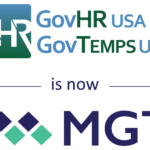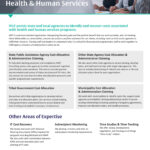As state and local governments face increased strain from lower tax revenues and shuffling of staff to handle the pandemic, it is a good time to ensure that public health agencies are receiving the appropriate level of funding from available revenue sources.
State and local public health agencies provide multiple services in support of the public. They range from coordinating vaccines to conducting inspections and providing health services. Agencies receive a wide array of grants from federal, state, and private sources to supplement tax revenue and fees to provide services. Most public health agencies charge fees for their services (e.g., well and septic inspections, inspections of food-related facilities, and issuance of various licenses). Commercial establishments expect to pay fees for these services, but if fees do not fund the full cost of inspections, general funds must make up the difference. As a result, there are fewer dollars to spend on other public health services.
Agencies should know if their fees cover their costs and determine if there are areas where they can increase fees now or in the future. There may be full support for raising fees related to travel immunizations once travel resumes, but more cautious about raising fees related to restaurant inspections given the hardships that have fallen on this industry. They should also review optional programs and the benefits to its citizenry to determine if these programs are providing the anticipated benefit by arraying the cost, number serviced, and anticipated versus actual benefit.
Many outside funding sources are for very specific purposes and are available depending on the programs provided by the agency. Certain activities may also qualify for entitlement reimbursement in partnership with state agencies, including the state Medicaid agency. The state Medicaid agency is responsible for coordinating all reimbursement with the federal government.
Many of the oversight agencies involved with public health are familiar with an “indirect cost rate” to identify the indirect costs associated with providing services and performing various activities. An indirect cost rate approximates the fair share of indirect costs that each direct service program should bear. Entitlements also incur indirect costs. But within entitlements, there are distinctions between administrative and service costs that are not as distinct in other grants. Medicaid identifies transportation, case management, and eligibility determinations as “administrative” activities in regulation. If a public health agency performs these activities, they require more than an indirect cost rate to identify and recover reimbursement for these activities.
As a result, public health agencies often document, prepare, and calculate a cost allocation plan that yields both actual costs and costs used to calculate various indirect rates. It is important that the agency has a single process to capture, identify, and allocate all costs to avoid duplication in any cost recovery efforts. It is also important that public health agencies ensure that they recover reimbursement for all appropriate activities, especially given a historical lack of funding.
It can be difficult to parse through various programmatic regulations to identify what costs qualify under what grant, especially Medicaid. Medicaid will not pay for activities and services that are provided for “free” to everyone or that are not in specific support of the Medicaid state plan. Just because an activity is health-related or performed for a Medicaid-eligible individual does not mean the activity is eligible for Medicaid reimbursement. But, many public health agencies do perform activities in support of the Medicaid program, and if partnerships do not exist, they can be established to increase the flow of funds to the state and/or locality. Even where programs do exist, public health agencies need to ensure they have proper accounting processes in place to comply with federal and state regulations and to capture every dollar they are entitled to.
MGT works with public health agencies of all sizes to identify potential revenue sources, the costs of accessing the revenue, and the future revenue that may be realized. Public Health programs are of great importance, but there is rarely adequate funding for all needs. Change can require painful choices, but with data, it is possible to make less painful changes. Profiling programs by the details of their revenues, expenses, and the number of people served can help. It allows them to be sorted by cost, the number of people served, and by use of tax levy.
In the current climate, even modest increases in fees or cuts may provide a significant benefit to the agency and its citizenry.










